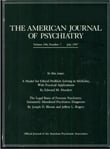In 1988 Peter Gay wrote, “The secondary literature on Freud is vast, rapidly growing, almost out of control. Some of this avalanche is revealing, much of it useful, more of it provocative; an astonishing share is malicious or downright absurd” (
1). Ilse Grubich-Simitis, editor, writer, and analyst, was initially stirred by similar emotions, especially about the endless criticism engendered by translations of Freud, notably the
Standard Edition. Her irritation quickly waned because it led her to go back to Freud's manuscripts. In her introduction to
Back to Freud's Texts, she deftly traces the movement of the secondary literature toward more interest in the person of Freud (“biographism”) and the history of psychoanalysis (“histiography”) than in the writings of Freud. She surmises that these trends could be happening, among other reasons, because the end of the twentieth century may find society less interested or focused on the ideal of the autonomous individual willing to spend years in the analytic process. The book's title describes her focus on what Freud said or meant to say by reviewing the available manuscripts and Freud-edited publications. Her ultimate aim was to encourage production of a “historical critical edition,” which would take into account manuscripts, drafts, variants, and all surviving texts in as complete a form as possible with critical editorial commentary. The book is “intended not least as a recommendation to psychoanalysts to sublimate, to identify not primarily with the person of Sigmund Freud but above all with the radical method of psychoanalysis—so difficult to learn—so needful of protection, as still the most effective instrument for the exploration of human subjectivity” (p. 10).
The book is divided into three parts. The first part, of moderate length, is a reconstruction of the history of the many editions of Freud's work. More than that, it describes the reimplanting of Freud's work into the German-speaking world. The Nazi regime succeeded in repressing Freud's works so successfully that his concepts disappeared from public consciousness. The publishing house of S. Fisher Verlag, where the author was an editor, did not dare to use the title Metapsychologische Schriften [Metapsychological Papers] for a volume of the Studienausgabe [textbook edition] in 1966 out of concern that the word “metapsychology” was unfamiliar and would be off-putting to the market for such a book.
The second part is the heart of the book. These nine chapters describe the author's review of the manuscripts and are about Freud as a writer. Noting earlier in the book that the secondary literature of late has tended to focus on the person of Freud (“furor biographicus”), Grubich-Simitis includes only biographical material that presents Freud at work—“Freud observing, listening, feeling surprised and stimulated, reading, learning, associating and fantasizing, concluding and conceiving, noting, drafting, rejecting, making fair copies, busying himself with his manuscripts, correcting proofs, editing and publishing” (p. 11). Separate chapters cover types of manuscripts: notes, drafts, fair copies (handwritten copies ready to be set in type), variants, first versions, posthumous publications, and unpublished material.
This section will most interest the psychoanalytically oriented person, especially those familiar with the
Standard Edition from psychoanalytic institute course work or individual reading. Freud composed with a fountain pen. He usually used oversized paper specially ordered by him. He would start with notes (which he sometimes cut and pasted), impressions from his work with patients, his thoughts, and his reading. He next would do drafts and, finally, fair copies, which illustrations show and Grubich-Simitis describes as things of beauty. The drafts and fair copies along with corrected galleys and printed copies show that Freud struggled for stylistic precision and, yes, made Freudian slips. Perhaps the most interesting chapter is on variants. Variants are extant revisions of Freud's original choices of text. “Variants may be regarded as tokens of conscious, preconscious, or unconscious intentions on the part of the author” (p. 152). There are variants of style and titles and something the author calls “emotive variants,” which are determined by inner conflicts. For example, two issues that were affectively charged for Freud—1) a long postscript in a manuscript critical of Americans' stand on lay analysis that was not published and 2) the issue of the historicity of the primal horde theory attacked by ethnologists including Alfred Kroebner, an American lay analyst and anthropologist—led to a parapraxis in the draft of the third Moses essay and a stronger restatement of historicity in the published version than in the manuscript. Kroebner, incidentally, is mentioned in a recent book on the history of California (
2).
The third part, relatively brief, makes suggestions for principles in making a new edition of Freud's complete works but ends with some dissatisfaction that a truly historical critical edition of Freud's work is not in the works for all sorts of reasons.
Back to Freud's Texts enacts a parallel process to one of the problems it describes. It was written in German and then translated into English by Philip Slotkin. I was not able to go back to the original in German, but the book is elegantly written. However, I must say, not as a criticism but a commentary on the problem of translation, that I found a number of words completely unfamiliar to me and certainly not in common English usage, technical or otherwise, examples of which are “aporias,” “divagation,” “propedeutic,” “adumbrated,” “apodictic,” “dramaturgy,” “puissant,” and “vertiginous.” But, then, the Standard Edition added some British English words to my American vocabulary.
Ilse Grubich-Simitis has written a fine book that, especially its middle part, will be of interest to all scholars of Freudian histiography and all those who are interested generally in the intellectual giant who so profoundly influenced the shape of American psychiatry in the middle 50 years of the twentieth century.

